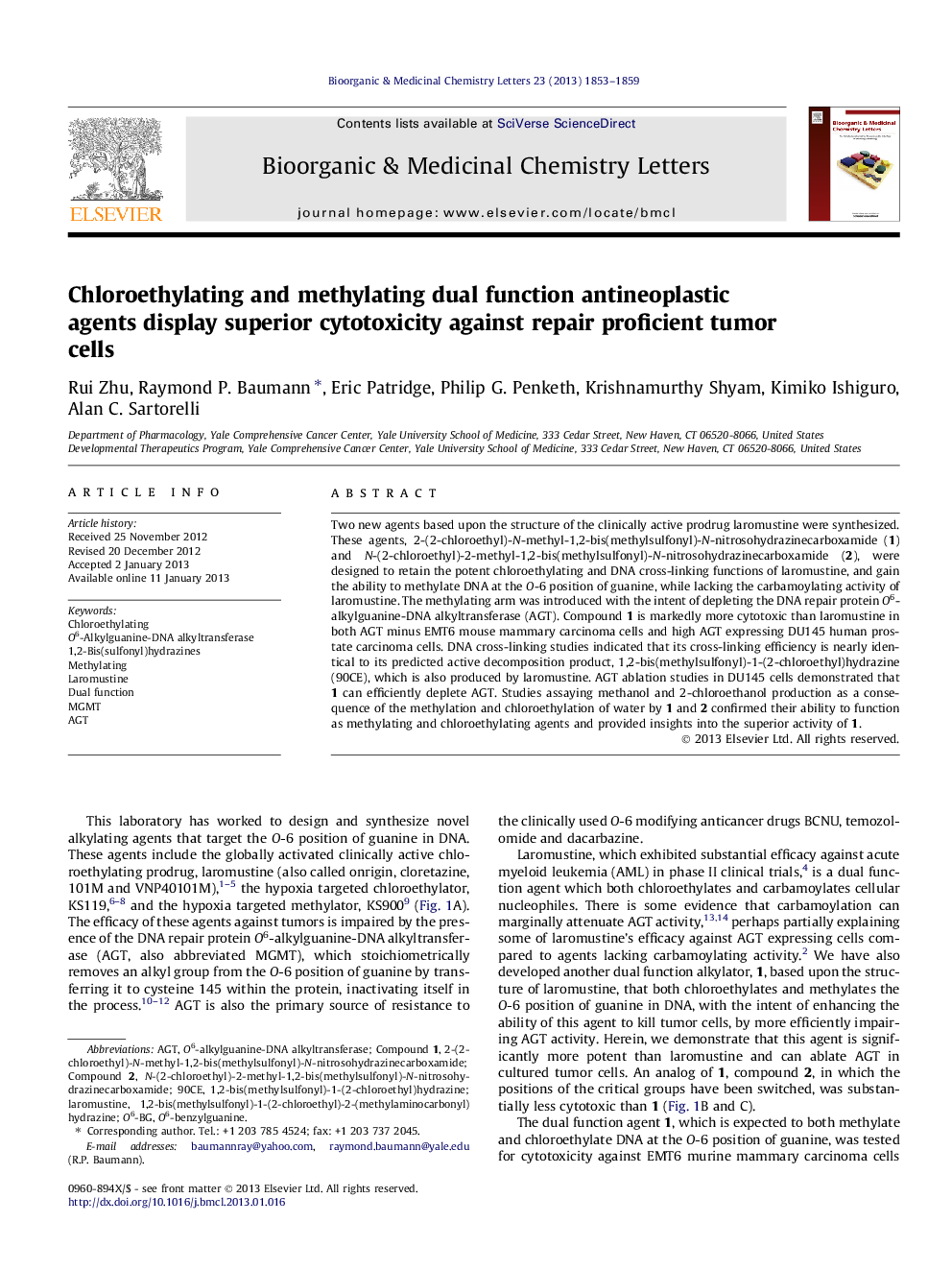| Article ID | Journal | Published Year | Pages | File Type |
|---|---|---|---|---|
| 1370373 | Bioorganic & Medicinal Chemistry Letters | 2013 | 7 Pages |
Two new agents based upon the structure of the clinically active prodrug laromustine were synthesized. These agents, 2-(2-chloroethyl)-N-methyl-1,2-bis(methylsulfonyl)-N-nitrosohydrazinecarboxamide (1) and N-(2-chloroethyl)-2-methyl-1,2-bis(methylsulfonyl)-N-nitrosohydrazinecarboxamide (2), were designed to retain the potent chloroethylating and DNA cross-linking functions of laromustine, and gain the ability to methylate DNA at the O-6 position of guanine, while lacking the carbamoylating activity of laromustine. The methylating arm was introduced with the intent of depleting the DNA repair protein O6-alkylguanine-DNA alkyltransferase (AGT). Compound 1 is markedly more cytotoxic than laromustine in both AGT minus EMT6 mouse mammary carcinoma cells and high AGT expressing DU145 human prostate carcinoma cells. DNA cross-linking studies indicated that its cross-linking efficiency is nearly identical to its predicted active decomposition product, 1,2-bis(methylsulfonyl)-1-(2-chloroethyl)hydrazine (90CE), which is also produced by laromustine. AGT ablation studies in DU145 cells demonstrated that 1 can efficiently deplete AGT. Studies assaying methanol and 2-chloroethanol production as a consequence of the methylation and chloroethylation of water by 1 and 2 confirmed their ability to function as methylating and chloroethylating agents and provided insights into the superior activity of 1.
Graphical abstractFigure optionsDownload full-size imageDownload as PowerPoint slide
